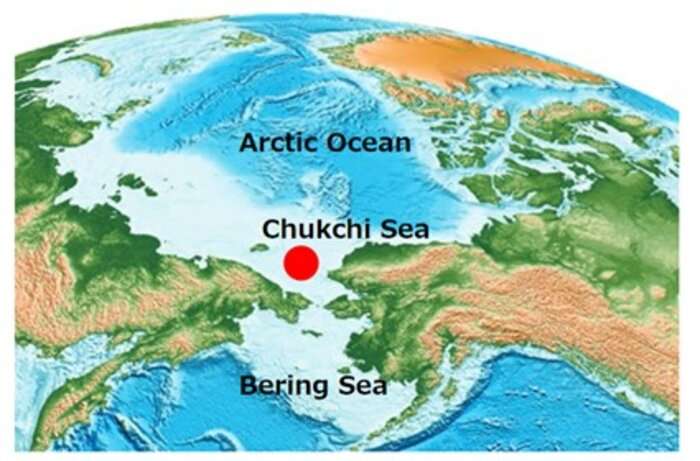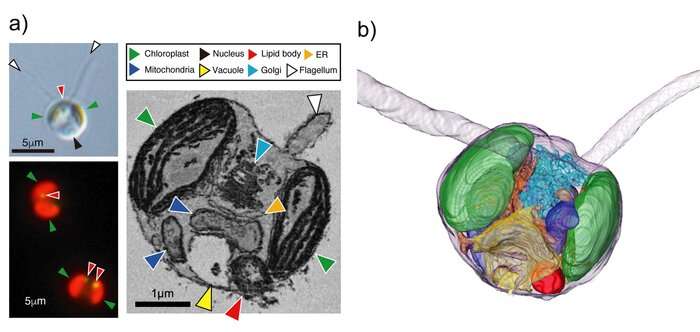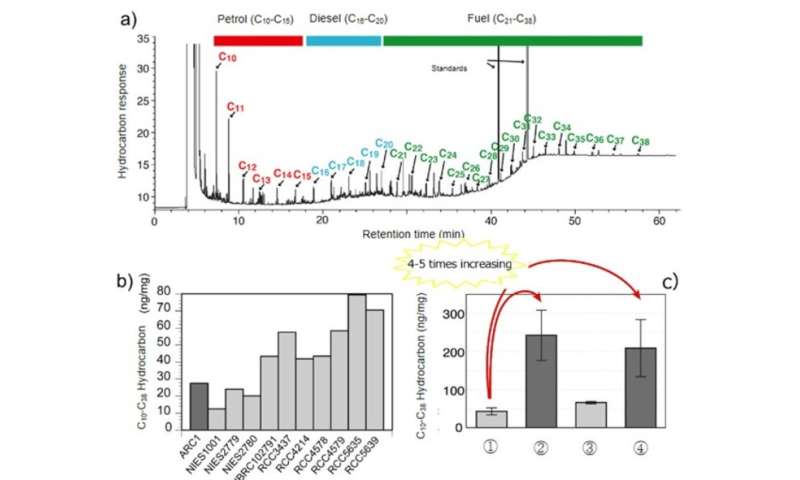A phytoplankton that synthesizes petroleum-equivalent hydrocarbons

Director-General Naomi Harada and colleagues from the Research Institute for Global Change at the Japan Agency for Marine-Earth Science and Technology, in collaboration with Assistant Professor Yuu Hirose from Toyohashi University of Technology and Specially Appointed Professor Kazuyoshi Murata from the National Institute for Physiological Sciences, discovered that the phytoplankton Dicrateria rotunda (D. rotunda) can synthesize a series of saturated hydrocarbons with a carbon number ranging from 10 to 38.
A phytoplankton community was collected from seawater of the Chukchi Sea during a science cruise of the research vessel "Mirai" in the Arctic Ocean in 2013, from which we isolated and cultured the Arctic strain of D. rotunda, ARC1. ARC1 contained a series of saturated hydrocarbons with a carbon number ranging from 10 to 38, which are categorized as petrol (carbon number 10 to 15), diesel oils (carbon number 16 to 20), and fuel oils (carbon number 21 or higher) . Moreover, we examined ten additional strains of Dicrateria stored in culture collections, all of which were found to be similarly capable of hydrocarbon synthesis, indicating that this was common to the entire Dicrateria genus. This study is the first to report on an organism with the capability to synthesize hydrocarbons equivalent to petroleum.
The capability of the ARC1 strain to synthesize saturated hydrocarbons was shown to increase depending on the environmental conditions, and the findings of this study are expected to contribute to the development of biofuels in the future.
-

a) Photographs of the Arctic strain ARC1 of D. rotunda captured by bright field microscopy (upper left), fluorescence microscopy (lower left), and electron microscopy (right). b) A 3D structure of ARC1 cell reconstructed from multiple electron microscope images. Credit: Toyohashi University of Technology. -

a) Gas chromatogram of hydrocarbons extracted from the Arctic strain ARC1 of D. rotunda. b) Amount of C10-C38 saturated hydrocarbons in 11 strains of D. rotunda. c) Amount of C10-C38 saturated hydrocarbons in the ARC1 strain cultured under different conditions. *Error bars (standard deviation). Credit: Toyohashi University of Technology.
More information: Naomi Harada et al, A novel characteristic of a phytoplankton as a potential source of straight-chain alkanes, Scientific Reports (2021). DOI: 10.1038/s41598-021-93204-w
Journal information: Scientific Reports
Provided by Toyohashi University of Technology





















